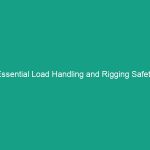Good Morning Team!
Today, we’ll discuss a vital topic that affects all of us in the workplace: Essential Safe Lifting and Carrying Techniques: Avoid These Common Mistakes. Understanding how to lift and carry properly not only protects you but also the people around you. Let’s dive into why this is important and how you can apply these techniques in your daily tasks.
Understanding Essential Safe Lifting and Carrying Techniques
Safe lifting and carrying techniques are practices designed to prevent injury during the handling of heavy or awkward loads. These techniques are essential for maintaining a safe working Environment and can significantly reduce the risk of musculoskeletal injuries, which are common in many workplaces.
Many employees believe that lifting with sheer strength is sufficient, while in reality, proper form and technique are what keep you safe. It is crucial to understand that improper lifting can lead to chronic pain, lost workdays, and even permanent injury.
Key Hazards, Risks, and Safety Considerations
There are several Hazards associated with lifting and carrying that we need to be aware of:
- Overexertion: Lifting too much weight or lifting incorrectly can lead to strains and sprains.
- Awkward Postures: Bending or twisting while lifting can cause serious injury.
- Slips and Trips: Carrying loads can obstruct your view and lead to falls.
- Improper Equipment: Using the wrong tools or not utilizing lifting aids can increase risk.
Ignoring Safety protocols can have real-world consequences, such as workplace injuries that may lead to medical expenses, lost wages, and decreased productivity. Understanding these risks is the first step toward Prevention.
Best Practices, Procedures, & Actionable Advice
Let’s go over some essential techniques to ensure safe lifting and carrying:
1. Assess the Load
Before lifting, always assess the weight and size of the object. If it feels too heavy or awkward, do not attempt to lift it alone. Seek assistance or use lifting equipment.
2. Use Proper Techniques
Follow these steps when lifting:
- Stand close to the load: Keep your feet shoulder-width apart for a stable base.
- Bend at your knees: Not your waist. Squat down to the load while keeping your back straight.
- Grip securely: Ensure a firm grip on the load with both hands.
- Lift with your legs: Straighten your legs to lift, keeping your back straight and the load close to your body.
- Turn with your feet: Avoid twisting your back as you move. Instead, pivot with your feet to change direction.
3. Use Equipment When Necessary
If the load is too heavy or awkward to lift manually, consider using equipment such as:
- Hand trucks
- Forklifts
- Hoists or lifts
4. Communicate
If you are lifting with a partner, always communicate clearly. Establish a plan and count together before lifting to ensure everyone is ready.
Case Studies: Real-World Incidents
Let’s take a look at a couple of incidents where improper lifting techniques resulted in injuries:
Case Study 1: The Importance of Teamwork
In a warehouse, two employees attempted to lift a large, heavy box without discussing their plan. One employee twisted to turn while lifting, leading to a severe back injury. This incident could have been avoided with proper communication and planning.
Case Study 2: The Risks of Overexertion
Another employee decided to lift a load alone that was beyond their capacity. The result was a strain that required weeks of recovery. This emphasizes the importance of knowing your limits and seeking help.
Regulations, Standards, and Compliance
Adhering to safety Standards is not just a good practice; it is a legal requirement. The Occupational Safety and Health Administration (OSHA) provides guidelines for safe lifting techniques, mandating that employers provide Training and resources for safe lifting practices.
Compliance with these standards protects you and your coworkers, ensuring a safer workplace. Always stay updated on company-specific policies and Procedures regarding lifting and carrying.
Employee Engagement & Discussion
Let’s reflect on our own experiences. Have any of you encountered challenges related to lifting and carrying? What strategies have you found effective in ensuring safety? Feel free to share your thoughts and experiences!
Conclusion & Key Takeaways
In conclusion, understanding and applying essential safe lifting and carrying techniques is crucial for maintaining Workplace Safety. Remember to always assess your load, use proper techniques, communicate effectively, and know when to use equipment.
Your safety is our priority, and by following these guidelines, we can ensure a healthier work environment for everyone. Thank you all for your attention and for your commitment to safety. Let’s keep lifting safely!


